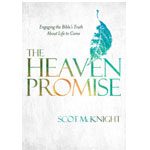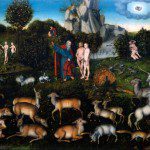Joel W. Martin, Chief of the Division of Invertebrate Studies and a curator at the National History Museum of Los Angeles County, published a book earlier this year: The Prism and the Rainbow: A Christian Explains Why Evolution Is Not a Threat. This book joins a series of books written by Christians active in the sciences explaining why they don’t find evolution a threat to their faith. The book is well worth a post looking at both strengths and weaknesses.
 First the strengths. Dr. Martin has written a short, readable, general introduction, a book geared toward high school and college students as well as their parents and pastors. He addresses important questions in chapters with titles like “What Does Theory Mean?” … “What Is Evolution?” … and “Human Arrogance.”
First the strengths. Dr. Martin has written a short, readable, general introduction, a book geared toward high school and college students as well as their parents and pastors. He addresses important questions in chapters with titles like “What Does Theory Mean?” … “What Is Evolution?” … and “Human Arrogance.”
In the front material Dallas Willard notes:
The Prism and the Rainbow provides a very effective introduction to arguments — some good, some bad — swirling around evolution and its critics in contemporary churches and their social context. A careful, critical reading of it could help young people get off to a good start in dealing with issues that trouble many people today.
The title of the book the Prism and the Rainbow alludes to Genesis 9 where God said to Noah “I have set my bow in the clouds, and it shall be a sign of the covenant between me and the earth.” Few of us stop to think much about the nature of a rainbow and the interpretation of this passage. A rainbow is the result of water reflecting and refracting in water droplets. It is rather far-fetched to propose that God changed the laws of physics to create a sign of the covenant. Rather we have here the impartation of meaning to a common phenomenon connected with the end of rain and flood. God created and God gives meaning to natural phenomena. Science does not invent nature – it reveals nature.
Dr. Martin is particularly clear and helpful in his discussion of theory and evolution. He defines terms like hypothesis, law, rule, and theory as commonly used in technical scientific literature; he discusses the nature of science and the state of understanding of evolution; all at a very accessible level.
In science a theory is “A well-substantiated explanation of some aspect of the natural world that can incorporate facts, laws, inferences, and tested hypotheses.” The word does not have the implication of uncertainty common in general conversation. One can discuss the germ theory of disease, gravitational theory, and evolutionary theory. The term does not imply any real uncertainty that germs cause some diseases, gravity exists, or evolution happens. Theory may also refer to a mechanism proposed to explain observed facts. Dr. Martin makes an important point here:
As a result, sometimes you will read that there is a distinction between the “fact” of evolution and the “theory” of natural selection. Today we no longer doubt whether evolution has occurred, but the mechanisms for it are often debated. This honest intellectual debate is sometimes (erroneously) seen as a debate over whether evolution has, in fact, occurred. It isn’t. (p. 44)
This is an important point that has come up in comments on various posts in the past. There is debate about the mechanisms of evolution. Random mutation and natural selection play an important role, but the whole process is far more complex than Darwin or Crick or even Dawkins realized. While gradual, it is not as constant in rate as Darwin originally proposed. This debate does not call into doubt the “fact” of evolution – but refines our understanding of mechanism and process.
Dr. Martin also has useful insight into the relationship between science and theology. Far too many Christians are prone to view creation as either – or; either nature or God, and this is just plain wrong. Dr. Martin gives an example of a popular youth leader at a retreat who commented “I believe that the Grand Canyon was created by God, and not by some river (p. 94)” as though the two were mutually exclusive.
Newton’s prism, you will recall, did not create the colors contained in sunlight. It simply revealed them. Science does not invent nature; it simply reveals nature. If this is God’s world, then science can only reveal God’s world. The formation of rainbows by the prismatic interaction of light and water – revealed by the science of optical physics – does not remove God from this beautiful spectacle. The formation of canyons by rivers – revealed by the science of geology – does not remove God from the Grand Canyon. The fact that the earth revolves around the sun rather than vice versa – revealed by the science of astronomy – does not remove God from our universe. The relatedness among all forms of life on earth, humans included, and the diversification of life over millions of years – revealed by the science of evolution – does not remove God from the history of life, or from our lives. (p. 96)
There are important weaknesses in Dr. Martin’s book however. The most significant weakness is the tone with which he deals with creationism and intelligent design. The approach is, I think, too adversarial; he leans too far toward dismissive ridicule at times and in places. This will not help those who find themselves in environments where either point of view, ID or creationism, is taken seriously by trusted adults. Because of this, I find it hard to recommend this book for the average high school student in the average evangelical church.
Nonetheless the book is a good resource for youth leaders and others without much scientific background. A careful critical reading will, as Dallas Willard noted, provide a good start in dealing with the issues that trouble many people today.
What do you think? Does the idea of theory bring images of speculation and uncertainty?
Does a physical explanation for rainbows cast doubt on the truthfulness of scripture? Why is evolution generally more controversial than physical optics?
If you wish to contact me directly, you may do so at rjs4mail[at]att.net











